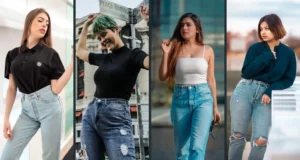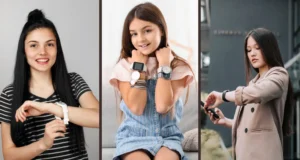For centuries, hats have accessorized women’s fashion in diverse ways. Endless styles emerged, reflecting periods’ preferred customs. Intricate Renaissance creations morphed into simpler straw choices. Rich eighteenth centuries saw empowering bonnet trends before romantic nineteenth silhouettes blossomed.
Dramatically, twentieth-century shifts diminished demand temporarily. Automotive mobility trimmed formalities. Bobbed independence dismissed rigid standards.
Nonetheless, hats rebounded through icons’ popularity. Jacqueline Kennedy epitomized pillbox prestige. Counterculture movements embraced bohemian wide-brims complementing deviant vibes.
Extravagant eighties welcomed statement silhouettes. Fun identities are expressed freely through diverse self-representations. Baseball caps contemporized relaxed personalities, too.
Across eras, beloved silhouettes complemented progressive lives as much as epitomized creative fashions. Memories immortalize treasured designs, intrinsically linking headwear with spirited eras. Legacies preserve nostalgic appeal through boundary-pushing histories.
History of women’s hats timeline?
Neolithic to Mesopotamian Influences (c. 8000-2600 B.C.E.)
The earliest hats women may have worn date back to around 8,000-2,600 BCE during the Neolithic and Mesopotamian periods. Cave paintings from this era show people wearing headwraps or basic caps, offering clues about humanity’s interest in headwear starting long ago.
These primitive hats likely evolved from readily available materials like animal skins, leaves, and bark to shield them from harsh sun and rain. New fabrics, including straw, felt, and woven cloth, gained popularity as time passed. Hats also became more artistic to reflect the cultural styles of each community.
During this early period, hats served important functions beyond fashion. They protected people’s heads as they settled into villages and started farming. Hats also served as status symbols, showing social ranks within societies. Wealthier women probably wore fancier decorated hats compared to others.
Archaeological findings indicate hats grew more complex over generations. Some featured feather adornments, beads, or other accessories. Both men and women donned headcoverings for practical purposes and personal expression.
Likely through trial and error, hatmaking advanced with new pottery and weaving technologies. People covered their hair in innovative ways that expressed their unique cultures and periods in history. So, the roots of women’s hat styling trace all the way back to humanity’s earliest civilizations.
In this way, the Neolithic and Mesopotamian era represents the dawn of hat fashions that women worldwide continue enjoying today. While materials and designs have evolved tremendously since, hats remain expressions of identity, tradition, and function as they did for our distant ancestors. Their long story shows no signs of ending any time soon.
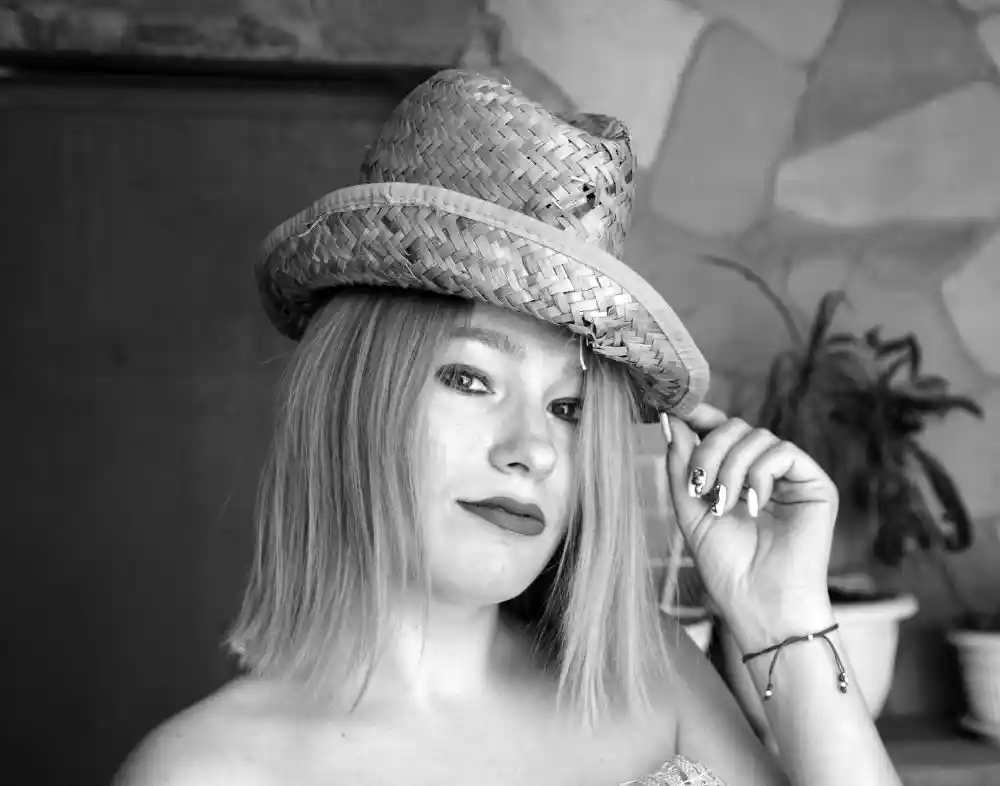
16th Century – Renaissance Elegance
During the Renaissance era, from the 15th to 17th centuries, women’s hat styles became very ornate. Hats were lavishly decorated with feathers, jewels, and intricate embroidery, reflecting this artistic period.
Wealthy women viewed hats as symbols of their luxury. Made from expensive fabrics, including velvet and silk, hats featured the latest fashion trends. Some popular styles were French hoods with long hanging tails, gable hoods with peaked fronts, and wired hoods using frameworks.
Many hats dazzled with pearls, gemstones, fur, and colorful feathers. This showed others the wearer could afford such extravagant accessories. At the same time, hats served practical purposes, protecting heads from rain and sun.
Those of lower classes often wore plainer hats to hide hair, which signified modesty. However, Renaissance society opened opportunities for exhibiting status through headwear. Women relished chances to display prosperity through their fanciful hats.
This was a time of innovation in ladies’ fashion overall. Hats played big roles as women explored new freedoms. While styles changed over generations, core functions like tradition and symbolic identities lasted.
So, the ornate hats of the Renaissance epitomized an unforgettable period where women first expressed thriving creativity through their headgear. Their magnificent tastes continue influencing hat designs even today.
7th Century – Modesty and Simplicity
During the 1600s, women’s hat styles became more understated and modest. This period embraced Puritan values like simplicity over lavish decor. At the same time, many struggled with financial hardships.
As a result, straw hats emerged as the most common choice. Made cheaply from woven plant material, these versatile hats fit all classes. Women wore straw hats for different events.
Felt hats crafted from wool remained costlier but hardier options. Wealthier women sometimes selected luxurious beaver fur variations, too. Styles signaled one’s social rank in society.
While protecting from the weather, hats served as fashionable accessories. Women expressed individual taste through straw hat embellishments like ribbons and flowers. They also wore bolder designs for special occasions despite the modest era.
This shift matched the cultural environment. Yet ladies found ways to enjoy hat choosing within accepted norms. Their coverings balanced prudent sensibilities with personal wishes, even during conservative times.
From ornate Renaissance creations to understated seventeenth-century versions, women’s hats adjusted to rule changes. But core purposes like identity expression and utilitarian protection remained integral parts of their headgear history.
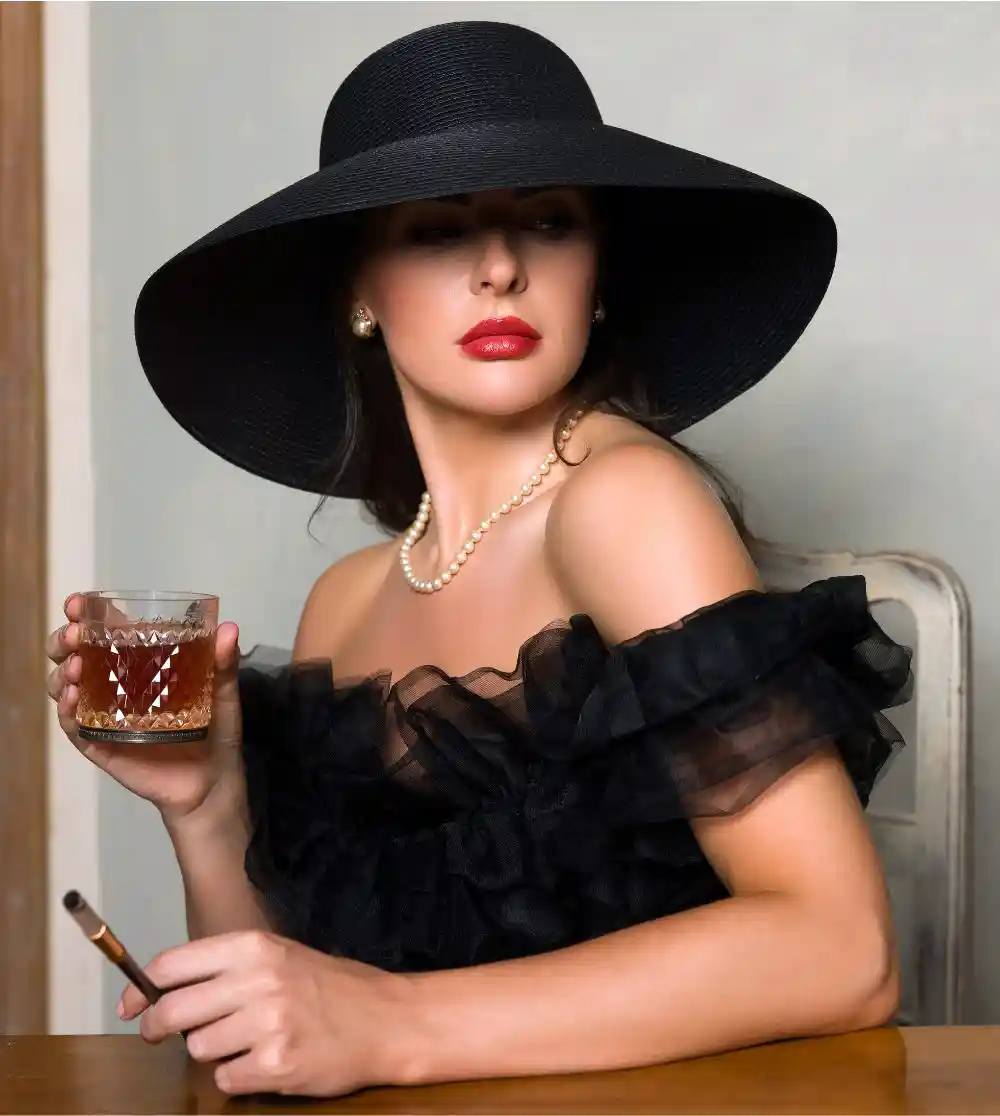
18th Century – Elaborate Revival
During the 1700s, lavish hat styles made a big comeback. Wealthy women relished decorating wide-brimmed hats and bonnets with frilly ribbons, flowers, and feathers.
This opulent era allowed showing off status through fashion again. Prosperity meant demands for luxurious goods increased, too. Hats served this purpose perfectly.
Wide hats flattered faces but also flaunted wearers’ money. Meanwhile, practical bonnets sheltered faces and ears in cold weather. Yet all hats projected elegance fitting the times.
Different social classes expressed rank via headgear choices. Wealthier women opted for flashy, wide-brimmed, and feathered styles. Poorer folks wore humbler bonnets and straw varieties instead.
While protecting heads, hats communicated identities and financial positions. Through their lavish lids, ladies enjoyed innovative methods of standing out from the crowd in refined society.
So, in this revival period, opulent coverings reemerged as significant cultural symbols. Headwear spotlighted femininity, fashion, and affluence just as emphatically as before simpler decades. Elaborate designs epitomized rich eras, allowing luxury expression.
19th Century – Diverse Styles
During the 1800s, hat styles grew increasingly varied. Bonnets, wide-brimmed hats, straw hats, and toques emerged in varied fabrics and decorations.
This diversity matched changes in society. Industrialization created a middle class who spent disposable incomes on fashion. Makers met demands for all budgets and occasions.
Bonnets charmed as usual but now featured ribbons, flowers, and individual touches. Wide hats and straw varieties protected from the sun while sporting feathers or embellishments.
Toques gained popularity, too, for everyday events. Materials like velvet and felt showed wealth, while straw seemed frugal. Styles broadcast status.
Choices let personalities shine. Some embraced simplicity. Others flaunted lavishness. All ways expressed distinctiveness perfectly fitting freeing times.
Fashion has also adjusted to modernizing environments. Varied hats balanced tradition with novelty and a range of lifestyles. Coverings evolved endlessly, mirroring progressive eras.
So, through booming trends, ladies enjoyed unprecedented freedom in communicating through innovative headwear. Their diverse crestions epitomized changing centuries. Hats became vital to identities and social roles alike.
Early 20th Century – Ornate and Large
During the 1900s and 1910s, ladies’ hats made bold statements through grand dimensions and lavish decorations. Pictures of hats, cloches, and boaters dazzled in elaborate finery.
Wealth permitted flaunting prosperity via headwear. Prosperity meant demands grew for luxury accessories complementing extravagant gowns of the time. Styles demonstrated rank expression perfectly.
Large hats suited formal affairs while shielding faces. Cloches sheltered during casual days yet retained refinement. Straw boaters stayed cool in summer alongside ornamentation.
Materials and detailed flourishes indicated social class. Richer fabrics for wealthier ladies created showstopping looks. More affordable variants still conveyed individualism.
Fashion obeyed period patterns. Yet hats allowed personalities to shine through daring designs. Whether flamboyant or simpler, coverings suited sovereign self-expressions.
However, trends evolved as decades passed. Automobiles, changing roles, and relaxed clothing steered hats smaller and occasional. Dynamics adjusted continually, as styles do through progressive eras.
So, in this timeframe, elaborate lids epitomized luxurious lives. Headwear spotlighted prosperity, convention, and advancing liberated spirits equally effectively. Their stories reflect rich histories.
1908 – Spectacular Hats
By 1908, ladies’ hats had reached their peak of grandeur and panache. Gigantic picture, Gainsborough, and bejeweled toque designs enchanted audiences.
Several factors likely inspired this zenith. A prosperous middle class flaunted disposable incomes through lavish accessories. Women asserted expanding freedoms via daring fashions, too.
The Edwardian era embraced opulence, setting the stage for such showstopping creations. Picture hats and Gainsborough styles impressed, especially with puffed plumes and brims.
Toques seemed petite yet glowed with jewels and feathers on tailored suits and bodices. Meanwhile, small silhouettes amplified looming headwear through contrast.
Styles indicated emerging independence and personalities during revolutionary times. Whether simplistic or lavish, hats allowed self-expression, perfectly fitting an unforgettable period.
While oversized designs then faded, memories of 1908 inventions remain. Through striking audacity, creations manifested thriving eras, allowing unprecedented freedoms. Their legacies reflect rich histories.
So, in this landmark year, magnificent headdresses towered as cultural icons. Coverings spotlighted progressing lives and societies equally effectively through daring forms.
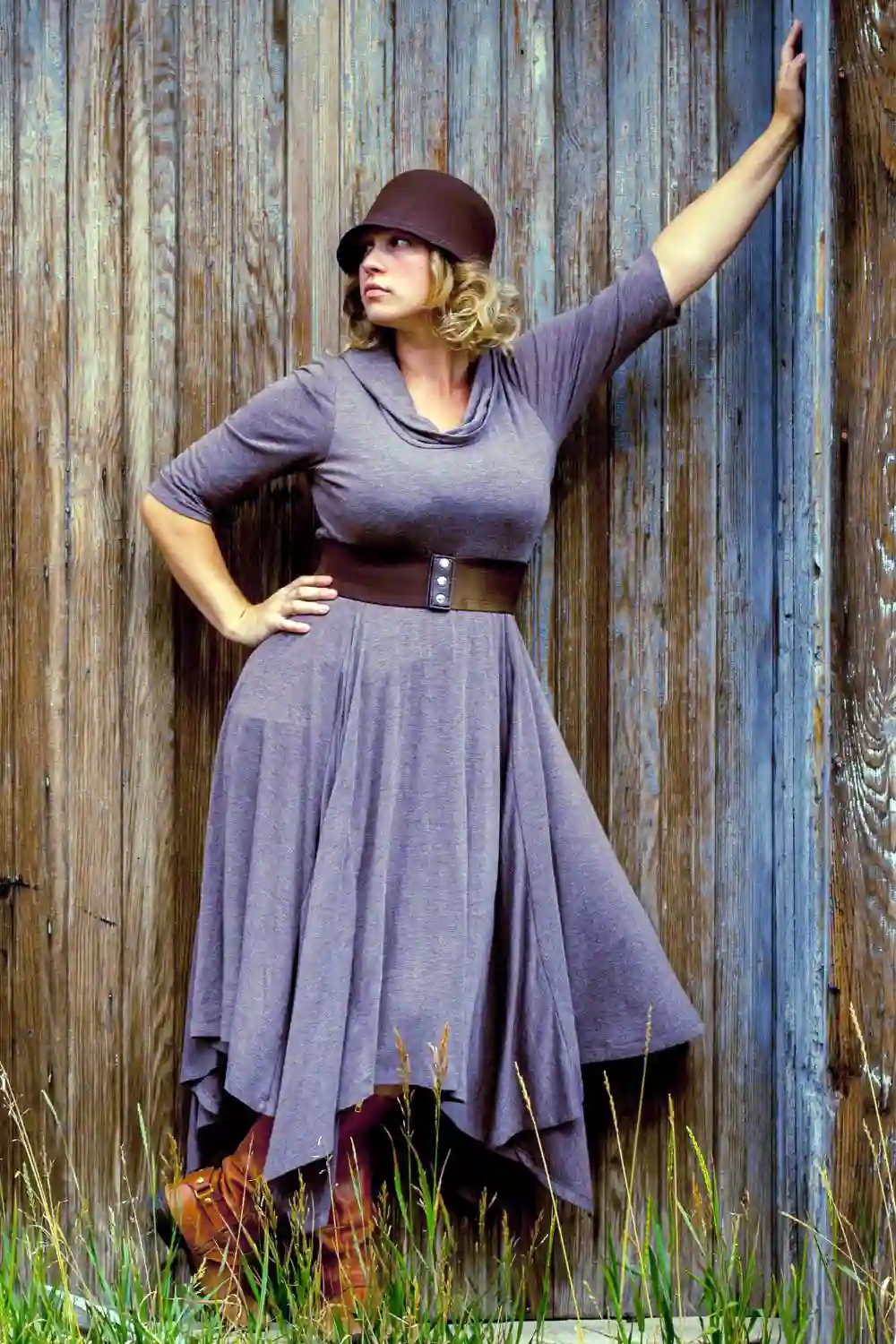
1920s – Gatsby Hats
During the Roaring Twenties, cloche hats defined a new era. Known as Gatsby hats, these low-crown styles entranced wearers.
Adorned with feathers or beads, cloches suited rebellious times. Their affordability made statements accessible for all. Versatility paired cloches with myriad garments, too.
These hats captured emancipated spirits. Women relayed flourishing independence through hardy accessories. Cosmopolitan cities amplified vivacious attitudes perfectly.
Cloches indulged in self-expressions according to moods. Wearers chose simple or ornate versions freely. Options satisfied any occasion from work to parties.
Gatsby hats became lasting period pieces. While fading later, memories immortalized liberated epochs, letting personalities shine unrestrained. Revivals resonate with pastoral nostalgia, too.
Legacies forever link the 1920s with empowered coverings. Through articulate symbols, cloches spotlighted advancing lives as much as glamorous eras. Their stories epitomize rich histories of progression.
So, in this landmark decade, spirited cloche designs reigned. Admired hats captured carefree vibes, perfectly complementing lively societies with pioneering charms.
Late 1950s – Turban Revival
During the late 1950s, turban hats made a fashionable resurgence. Evolving times sparked renewed interest in unique headwear.
Jet travel exposes more to diverse cultures. Figures like Jacqueline Kennedy and Audrey Hepburn popularized exotic silhouettes, too. This globalized period embraced ethnic influences.
Luxurious materials like velvet and satin draped turbans elaborately. Embellishments individualized expressions. Varied styles befitted all personalities and events, from routines to weddings.
Celebrities displayed cosmopolitan sophistication through dramatic turbans. Copiers relayed similar airs with accessible vehicles. Options satisfied independent self-representations.
Revivals echo the significance of evolving eras. Memories immortalize progressive atmospheres, enabling unrestrained creative visions. Today, wearers commemorate liberated forebears through vintage nostalgia.
Legacies intrinsically link the late 1950s with visionary coverings. Admired turbans spotlighted advancing societies as much as emblemized resourceful spirits. Their persistent influence characterizes rich histories.
So, through stylized comebacks, inventive headdresses thrived. Beloved turbans relayed borderless mindsets, perfectly complementing spirited times with pioneering nuances.
1950s and 1960s – Pillbox Hats
During the mid-1900s, stylish pillbox silhouettes captivated audiences. Sleek crowns and thin rims defined a new era of sophistication.
Artful touches like beads and lush fabrics individualized these iconic lids. Options satisfied all personalities according to preferred hues, too.
Figures including Jacqueline Kennedy popularized pillboxes. Wearers gained airs of the period through chic accessories, even at affordable rates.
Versatility allowed pillboxes to accompany casual and formal looks. They imparted refined nuances suitable for any atmosphere, from routine to weddings.
While declining thereafter, memories immortalize stylized eras, enabling liberated fashions. Revivals resonate with pastoral nostalgia as timeless additions to elegant ensembles.
Legacies forever link pillboxes with visionary silhouettes. Admired designs spotlighted advancing lives as much as they epitomized refined tastes. Their influence endures through rich histories.
So, through iconic popularity, ingenious pillbox designs reigned. Beloved styles expressed carefree vibes, perfectly complementing spirited times.
1960s and 1970s – Floppy Hats
During the 1960s-1970s, flowing silhouettes epitomized free spirits. Floppies’ wide brims and pliable crowns suited rebellious epochs perfectly.
Artful accents like ribbons and flowers individualized bohemian expressions. Diverse colors satisfied personalized selections for each ensemble, too.
Casual comfort accompanied contemporary trends. Wearers paired floppies with everything from jeans to maxi dresses effortlessly.
Festivals and concerts amplified carefree attitudes through artistic lids. While popularity wanes thereafter, memories immortalize liberated times.
Revivals echo rich stories. Today, nostalgic retro vibes complement sunny events and relaxed moods through timeless designs.
Legacies forever link floppies with unconventional rebels. Admired accessories complemented advancing subcultures as much as liberated individuals. Their influence perseveres through boundary-pushing histories.
So through iconic revivals, imaginative silhouettes complemented spirited eras. Beloved floppies expressed carefree vibes synonymous with the artistic movements they personified.
1980s – Dramatic Styles
During the 1980s, lavish styles epitomized bold self-expression. Wide-brimmed picture hats and bowlers made unmissable statements.
Feathers and blooms accentuated felt and straw creations. Celebrities including Madonna, Diana, and Cyndi popularized eye-catching silhouettes too.
Oversized accessories accompanied everything casually. Wearers paired drama with denim as freely as cocktail dresses. Occasions like weddings sparkled additionally.
Excess characterized the period. Dramatic hats complemented experimentation perfectly, imposing attitude effortlessly. While fading thereafter, memories preserve cutting-edge spirits.
Revivals echo rich histories. Nostalgic retro vibes revive outsized accessories for special events and confident personalities. Their influence persists through boundary-pushing tales.
Legacies relate lavish lids intrinsically with visionaries. Admired designs complement advancing lives as much as emblemized creative expressions. Stories characterize rich histories.
So through iconic revivals, imaginative silhouettes epitomized emancipated souls. Beloved dramatic hats expressed spirited vibes synonymous with the artistic movements they personified.
20th Century – Fluctuating Popularity
During the 1900s, headwear trends experienced ups and downs. Early automobiles and emancipated roles diminished demand initially.
Practical needs like sunshine protection also declined priority. Bob cuts and mini silhouettes also fit modern mobility less than past designs.
Icons, including Jackie Kennedy, reignited passions, however. Pillboxes and wide brims flattered elegant functions perfectly, while floppies accompanied liberated holidays casually.
Diversity peaked through innovative silhouettes for any ensemble or event. Practical coverage complements styling just as personality statements individualize expressions effortlessly.
While popularity wavered thereafter, rich histories immortalized spirited eras. Revivals resonate with nostalgic souls and thrive through boundary-pushing tales.
Modern reinventions surpass limitations. Versatile accessories flatter contemporary lifestyles and classic-trendy visions interchangeably.
Legacies forever link hats with emancipation. Admired accessories complement advancing lives as much as they epitomize creative self-representations. Their influence persists through rich histories.
So, through iconic fluctuations, imaginative lids expressed carefree vibes synonymous with the artistic movements they personified throughout progressive periods.
Classic Fedora Hats
Fedoras debuted in the late 1800s, gaining instant favor amongst all. Wide brims and pinched tops epitomized sophistication perfectly.
Legends including Bogart and Hepburn popularized fedoras throughout the 1920s-1930s glutinous era. Icons exemplified spirits through timeless accessories.
Memorable films and television series immortalized beloved silhouettes. Fedoras became intrinsically linked with classic mediums.
Versatility permits fedoras to complement casual denim as naturally as formal suiting. Wearers relish fedoras’ accompaniment for multifaceted events and activities.
Memories of storied performers endure through nostalgic revivals. Fedoras subtly conjures past grandeur while imparting individualized nuance to personalized aesthetics.
Fedoras withstand progression through iconic associations and resilient versatility. Admired accessories never relinquish refined essence, whether reinventing with progressions or preserving traditions.
Legacies relate fedoras intrinsically with visionaries across eras. Fedoras will persist, epitomizing sophistication through rich histories and liberated self-expressions they complement eternally.
Boater Hats
Boaters debuted mid-1800s, immediately complementing summer rituals. Lightweight straw and expansive brims suited sizzling days perfectly.
Legends, including Chaplin and Chanel, epitomized carefree spirits through beloved accessories. Icons exemplified seasonal vibrancy through iconic silhouettes.
Memorable cinematic appearances immortalized boaters. Tales intrinsically linked classy lids with leisurely activities and movements.
Versatility permits boaters to complement everything casually. Wearers relish accompaniment for diversified schedules and environments with practical sophistication.
Memories of storied performers endure through nostalgic revivals. Boaters subtly evoke past summertime essence while imparting nuanced individuality.
Boaters withstand progression through iconic associations and versatile practicality. Admired lids never relinquish effortless essence, whether reinventing with trends or preserving traditions.
Legacies relate boaters intrinsically with visionaries across eras. Boaters will persist, epitomizing summer vacations through rich histories and liberated expressions they complement perfectly.
Baseball Caps
Baseball caps originated protecting athletes, evolving since to complement multifaceted personalities. Flexible cotton and logos express multifaceted vibes casually.
Practical shading and hair containment accompany energetic schedules conveniently. Wearers relish versatile accompaniment for diverse environments and functions.
Memorable sports superstars exemplified spirited appeal through beloved accessories. Legends immortalized iconic silhouettes intrinsically linked with competitive passions.
Collectible caps epitomize favored affiliations creatively. Statements subtlety endorse causes and communities near to heart.
Expressive individualism sustains demand. Baseball caps impart nuanced character to any ensemble as comfortably as exhilarating pastimes.
Versatility permits coordinating caps with everything effortlessly. Wearers appreciate sophisticated ease complementing lifestyles, adventurous or leisurely.
Rich histories preserve nostalgic appeal. Baseball caps subtly evoke vibrant traditions while imparting liberated flair. Memories immortalize treasured accessories.
Legacies link baseball caps with spirited souls eternally. Admired silhouettes complement advancing lives as much as epitomized emancipated expressions throughout history.

Summary
For centuries, hats expressed changing societies through diverse forms. Practical beginnings evolved lavishly across eras. Intricate silhouettes complemented Renaissance prestige before simpler straws accompanied Puritan humility.
Extravagant eighteenth centuries saw the return to ornate bonnets. Nineteenth diversification satisfied individualism. Twentieth dawn diminished demand temporarily yet icons rekindled passions. Pillboxes and wide floppies captured mid-century sophistication freely.
Bohemian seventies embraced expressionism. Dramatic eighties complemented excess faithfully. Innovation persisted through iconic cloches and turbans, too. Fedoras and boaters embodied summer elegance for generations. Baseball caps contemporized relaxed personalities casually.
Regardless of fluctuating popularity, hats constitute boundary-pushing histories. Timeless designs survive revivals, complementing modern progressiveness just as nostalgic heritages. Versatile accessories impart nuanced character through spirited silhouettes, definitely. Legacies forever link headwear with emancipated souls.
FAQ
Who is America’s oldest hat maker?
America’s oldest hat maker is the Bollman Hat Company. Founded in 1868, it is the oldest hat maker in America and one of the oldest in the world.
Why did everyone wear hats 100 years ago?
Wearing hats was a common practice 100 years ago for several reasons. Hats provided protection from the elements, such as rain, wind, and soot. They were also considered fashionable accessories and part of proper attire. Social norms and etiquette dictated that both men and women should wear hats as a sign of respect and style. Specific hat-wearing customs, like the Straw Hat Riots of 1922, also existed during that time.
Why did everyone stop wearing hats?
The decline in hat-wearing can be attributed to several factors. Firstly, improvements in climate control, such as heating in houses, public transport, and workplaces, made hats less necessary for protection. Secondly, changing notions of social class led to a decrease in the practice of wearing hats as a symbol of status. Additionally, the rise of highways and motorcars made it difficult to wear hats comfortably, and car roofs made hats less practical.
Why did fedoras go out of style?
Fedoras went out of style primarily in the second half of the 1950s due to a shift towards more informal clothing styles. The rise of casual fashion and a decline in formal attire contributed to the decrease in the popularity of fedoras. Additionally, the negative stereotype associated with the “neckbeard” subculture in recent years has further diminished the appeal of fedoras as a fashion choice.
What was the first hat with a brim?
The first hat to have a brim of sorts was the “Petasus,” a sun hat worn by ancient Greeks. It was made of wool felt, leather, or straw and had a brim to provide shade from the sun. This hat is considered one of the earliest examples of a hat with a brim.
